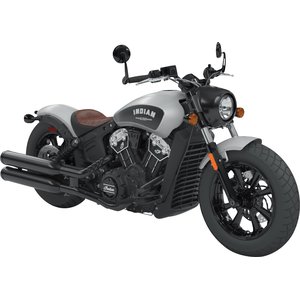Indian Scout Bobber [2018 - 2022]: A Test Ride Through Its Soul
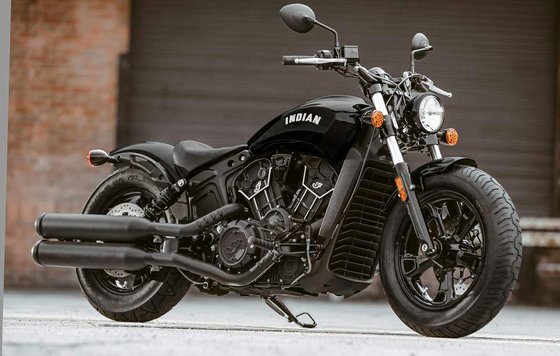
When Indian Motorcycle resurrected the Scout name in 2015, it wasn’t just reviving a legend—it was rewriting the rules of modern cruisers. The Scout Bobber, introduced in 2018, took that philosophy further by stripping away everything non-essential, leaving a machine that feels like a tattoo on wheels. After spending a week with this blacked-out beast, here’s why it’s more than just a motorcycle—it’s a statement.
Design: Where Minimalism Meets Menace
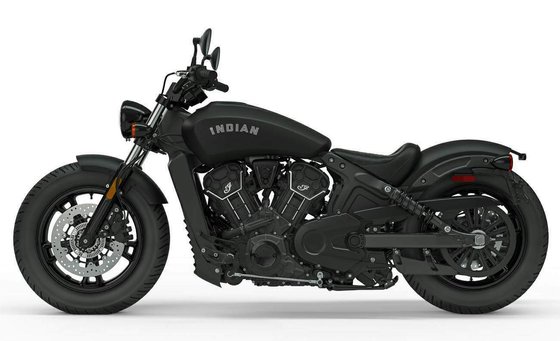
The Scout Bobber doesn’t just turn heads—it snaps necks. From the moment you approach it, the design screams intent. The bobbed fenders (a 15% reduction in length compared to the standard Scout) give it a taut, impatient posture, like a boxer bouncing on their toes. The side-mounted license plate and integrated taillight/turn signals aren’t just styling cues—they’re a middle finger to clutter.
Key design elements: - Blackout Everything: From the 41mm telescopic forks to the exhaust shields, 90% of components are murdered out. Even the engine’s cooling fins wear matte black like war paint. - Leather & Steel Theater: The low-profile solo seat (649mm/25.6" height) isn’t just low—it’s deliberately low, forcing your knees into a 95-degree angle that says “ride me hard.” - Tank Typography: Replacing the traditional badge with bold “INDIAN” block letters isn’t branding—it’s a declaration.
During my test ride, parked outside a café, three separate riders asked about the bike. One called it “a steampunk rocket.” Accurate.
Engine Performance: V-Twin Violence, Refined
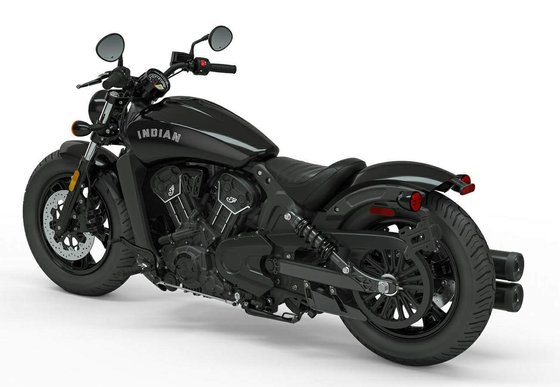
Let’s settle this first—the Bobber comes in two flavors: - Scout Bobber Sixty (999cc): 78 HP (58 kW), 88.8 Nm (65.5 lb-ft) - Standard Scout Bobber (1133cc): 100 HP (73.5 kW), 97.6 Nm (72 lb-ft)
I rode the 1133cc version, and its liquid-cooled 60° V-twin is a masterpiece of contradiction. At idle, it purrs at 1,100 RPM with the politeness of a librarian. Crack the throttle, and that librarian reveals a chainmail bikini—97.6 Nm hits at 5,900 RPM with a shove that’s more electric than ICE.
The magic isn’t just in the numbers—it’s in the delivery. Unlike air-cooled rivals that peak early, this engine pulls like a Tesla Model S with a vendetta: - 0-100 km/h (0-62 mph): 4.1 seconds (est.)—quicker than a Harley Sportster 1200 - Overtaking: From 80-120 km/h (50-75 mph) in 3rd gear, it’s a tsunami of torque
The 6-speed gearbox is slicker than a Tokyo drift, but the real star is the belt drive. Silent, clean, and maintenance-free—it’s the anti-chain.
Handling: Low, Loud, and Surprisingly Nimble
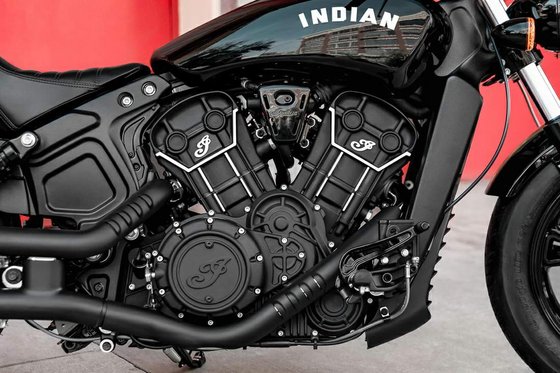
With a 1576mm (62") wheelbase and 240kg (529 lbs) dry weight, you’d expect this to handle like a sofa. Surprise—it carves corners like a hacksaw through balsa wood.
Key dynamics: - Rake & Trail: 29° rake / 120mm (4.7") trail—aggressive for a cruiser - Tires: 130/90-16 front, 150/80-16 rear (Pirelli MT60RS on later models) - Suspension Travel: 120mm (4.7") front, just 51mm (2") rear
On twisty backroads, the Bobber defies physics. The 16" wheels (controversial among sport riders) provide quick steering—almost too quick. At 140 km/h (87 mph), the bike feels planted, but crosswinds nudge the bars. This isn’t a highway missile—it’s a backroad bruiser.
The single 298mm disc brakes (2-piston front, 1-piston rear) lack initial bite but offer progressive feel. ABS (optional) is non-intrusive. Still, aftermarket pads from MOTOPARTS.store could sharpen response.
Competition: How the Bobber Stacks Up
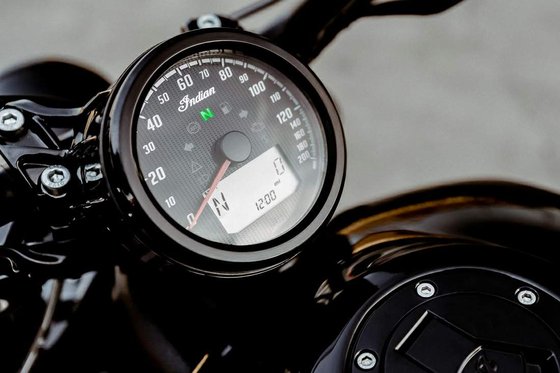
1. Harley-Davidson Sportster 1200
- Power: 67 HP (50 kW) / 97 Nm (72 lb-ft)
- Weight: 251kg (553 lbs)
- Verdict: The Sportster’s air-cooled 45° V-twin can’t match the Scout’s top-end rush. Harley’s chassis is more flexible, but the Bobber wins on tech (liquid cooling, gearbox).
2. Triumph Bonneville Bobber
- Power: 77 HP (57 kW) / 106 Nm (78 lb-ft)
- Weight: 228kg (503 lbs)
- Verdict: Triumph’s parallel twin has character, but the Indian’s V-twin soundtrack dominates. The Bonneville’s suspension is plusher, but the Scout feels sportier.
3. Yamaha Bolt R-Spec
- Power: 65 HP (48 kW) / 82 Nm (60 lb-ft)
- Weight: 247kg (545 lbs)
- Verdict: A budget alternative. The Bolt’s 942cc V-twin is buzzy above 4,000 RPM. No contest in power or prestige.
Why the Scout Bobber Wins: It’s the only modern bobber combining a high-revving liquid-cooled engine with true customization potential (140+ factory accessories).
Maintenance: Keeping the Beast Alive
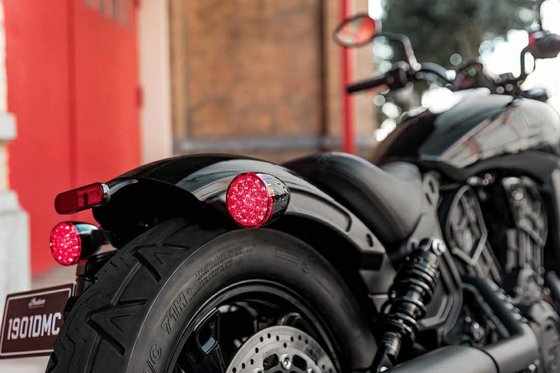
The Scout Bobber isn’t high-maintenance, but neglect it, and it’ll bite. Key tips:
1. Oil Changes
- Interval: Every 10,000 km (6,200 miles)
- Oil Type: SAE 15W-60 (4.73L/5qts with filter)
- Pro Tip: Use a magnetic drain plug to catch metal shavings from that high-strung V-twin.
2. Belt Drive Care
- Inspect every 5,000 km (3,100 miles) for cracks. Avoid tire shine—it degrades rubber.
3. Suspension
- The short 51mm rear travel gets harsh. Consider upgrading to MOTOPARTS.store’s adjustable shocks for heavier riders.
4. Brake Fluid
- DOT 4 fluid absorbs moisture. Flush every 2 years, or when the lever feels spongy.
5. Tires
- Pressures: 2.5 bar/36 psi (front), 2.75 bar/40 psi (rear)
- Upgrade: Swap stock Kenda tires for Pirelli MT60RS (better wet grip)
The Verdict: Why You’ll Love/Hate It
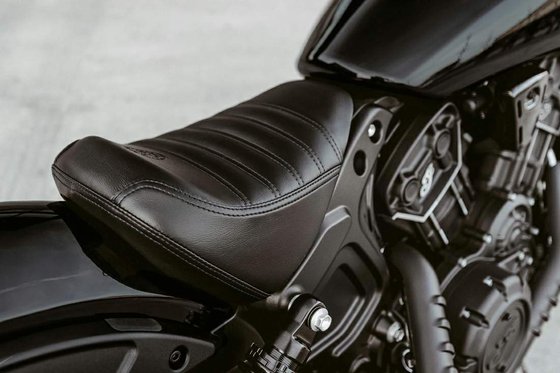
Love:
- That 100 HP V-twin is addictive
- Handles like a cruiser half its weight
- Endless customization (check our Bobber parts collection)
Hate:
- Rear suspension beats you up on potholes
- Limited lean angle (peg scrapes at 32°)
- Small 12.5L (3.3 gal) tank = 240km (150mi) range
Final Thoughts
The Indian Scout Bobber isn’t trying to be everything—it’s trying to be the most. The most attitude, the most power, the most customizable. It’s a motorcycle that doesn’t just ride roads; it owns them. And when you’re ready to make it yours, we’ve got the parts to dial that attitude to 11.
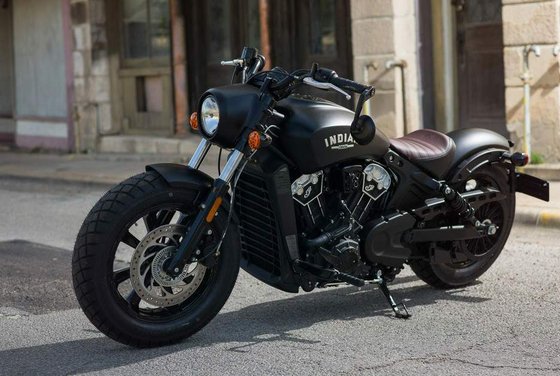












Specifications sheet
| Engine | |
|---|---|
| Stroke: | Four-stroke |
| Max power: | 74 kW | 99.0 hp |
| Max torque: | 98 Nm |
| Fuel system: | Closed-loop sequential port fuel injection, 60 mm bore |
| Max power @: | 8100 rpm |
| Displacement: | 1133 ccm |
| Max torque @: | 5900 rpm |
| Bore x stroke: | 99.0 x 73.6 mm (3.9 x 2.9 in) |
| Configuration: | V |
| Cooling system: | Liquid |
| Compression ratio: | 10.7:1 |
| Number of cylinders: | 2 |
| Dimensions | |
|---|---|
| Wheelbase: | 1576 mm (62.0 in) |
| Dry weight: | 242 |
| Wet weight: | 251 |
| Seat height: | 649 mm (25.6 in) |
| Overall width: | 926 mm (36.5 in) |
| Overall height: | 1053 mm (41.5 in) |
| Overall length: | 2223 mm (87.5 in) |
| Ground clearance: | 130 mm (5.1 in) |
| Fuel tank capacity: | 12.5 L (3.3 US gal) |
| Drivetrain | |
|---|---|
| Final drive: | belt |
| Gear ratios: | 1st 10.926:1, 2nd 7.427:1, 3rd 5.918:1, 4th 5.022:1, 5th 4.439:1, 6th 4.087:1 |
| Transmission: | 6-speed sliding-mesh |
| Primary drive: | Gear drive wet clutch |
| Final drive ratio: | 2.357:1 |
| Maintenance | |
|---|---|
| Rear tire: | 150/80-16 |
| Engine oil: | 15W60 |
| Front tire: | 130/90-16 |
| Brake fluid: | DOT 4 |
| Spark plugs: | NGK MR7F |
| Spark plug gap: | 0.8 |
| Coolant capacity: | 2.6 |
| Forks oil capacity: | 0.45 |
| Engine oil capacity: | 4.73 |
| Valve clearance check interval: | 24,000 km / 15,000 mi |
| Recommended tire pressure (rear): | 2.75 bar (40 psi) |
| Recommended tire pressure (front): | 2.5 bar (36 psi) |
| Additional Features | |
|---|---|
| ABS: | Optional on all models |
| Lighting: | LED lighting package |
| Warranty: | 2 years unlimited mileage |
| Instruments: | Digital tachometer, odometer, trip meter, engine temp gauge |
| USB charging port: | Standard equipment |
| Chassis and Suspension | |
|---|---|
| Rake: | 29° |
| Frame: | Aluminum |
| Trail: | 120 mm (4.7 in) |
| Rear brakes: | Single 298 mm disc, 1-piston caliper (ABS optional) |
| Front brakes: | Single 298 mm disc, 2-piston caliper (ABS optional) |
| Rear suspension: | Dual shocks, adjustable preload |
| Front suspension: | 41mm telescopic fork, non-adjustable |
| Rear wheel travel: | 51 mm (2.0 in) |
| Front wheel travel: | 120 mm (4.7 in) |



